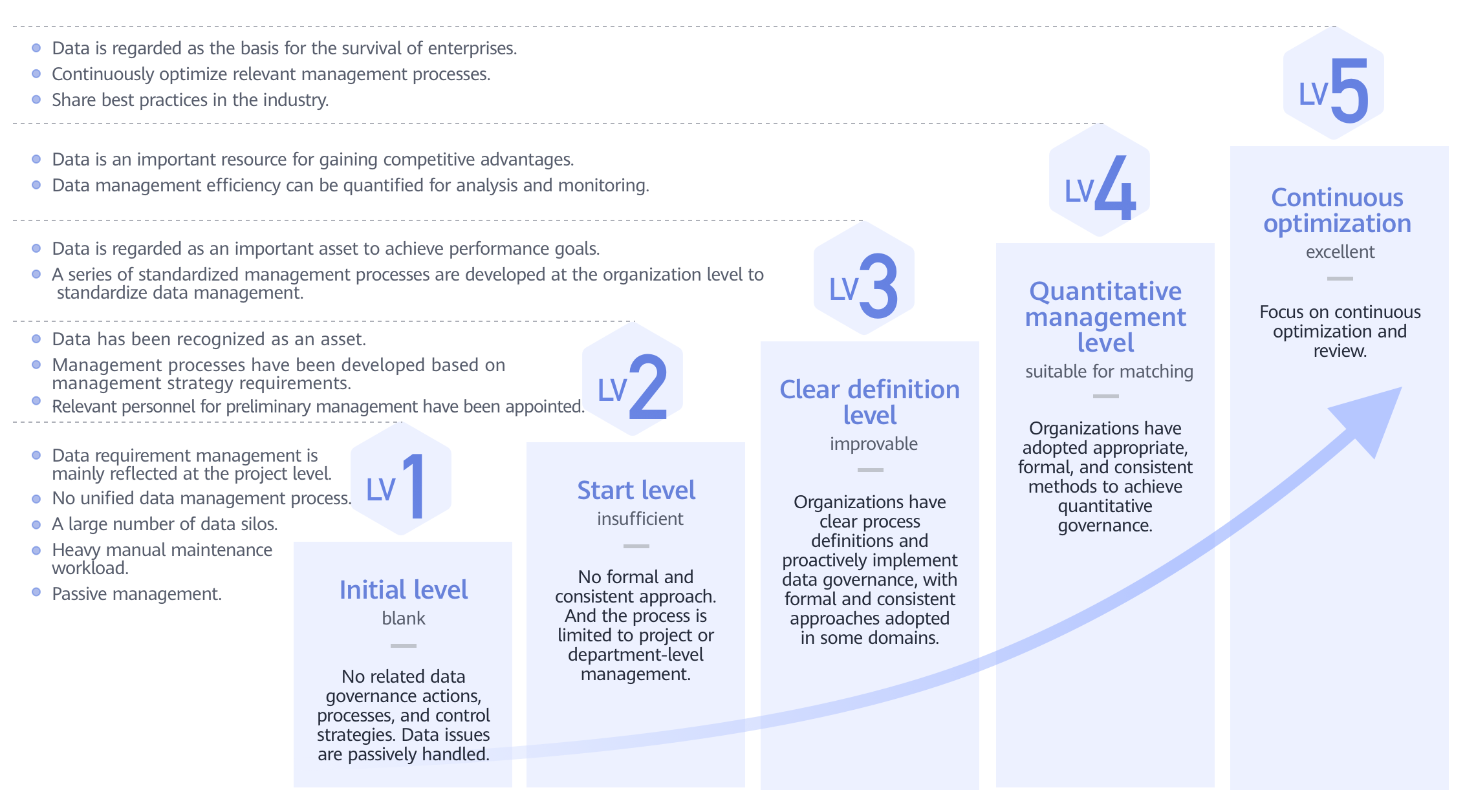Measurement and Scoring Rules
There are five levels of data governance maturity:
- Level 1, the lowest level, is when there is no data governance at all.
- Level 2 is when there is a certain amount of data governance, but there is no unified method available.
- Level 3 is when a proactive data management process and formal and consistent data governance methods have been clearly defined and are being implemented, but there is still much room for improvement in data governance.
- Level 4 is when there is quantitative management, which indicates that data governance is already fairly well developed. At level 4, formal and consistent data governance methods are being applied throughout the whole organization and those methods can be quantified and controlled.
- Level 5 is the highest level. At level 5, data governance is already quite mature and the priority should be continuous improvement.

Scorecards are used to score a range of aspects of data governance on a scale of one to five, and each aspect has a sub-item that is scored either 0 or 1. A score of 0 means that performance in that sub-item does not meet requirements, and a score of 1 means that it does.

In the example shown here, there are six measurement sub-items for "7.10 delivery project management". The calculation formula is as follows: (Total score of sub-items x 5)/Total sub-items. For in this example, the actual score is (1 + 1 + 1 + 0 + 0 + 1) x 5/6 = 3.3.
Feedback
Was this page helpful?
Provide feedbackThank you very much for your feedback. We will continue working to improve the documentation.






